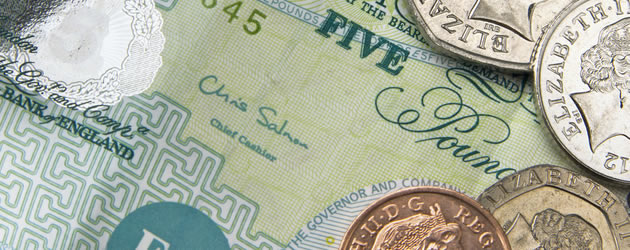- GBP/EUR Currency Pair sees Slight Boost – Positive reports from UK afford much need support
- ‘Brexit’ Fears Continue to Plague the Pound – Uncertainty over the UK’s EU departure keeps investors dovish
- Uninspiring ECB Announcement Weakens Previously Steady Euro – Plans to hold rates have failed to garner support for the single currency
- Ahead of Eurozone Retail Data and UK GDP Reports Pound seems at Risk – Forecasted data seems set to be disappointing for the UK across the board.
After a grim week for the Pound due to mounting concerns for a British exit of the European Union, the Pound Sterling to Euro (GBP/EUR) exchange rate appreciated slightly after improved output in the UK’s services sector.
This, however, could be a glimmer of false hope. Markit’s chief economist Chris Williamson was concerned about the figures. He was quoted in the report thusly:
‘The PMI surveys show that the pace of economic growth remained subdued in May… Growth has collapsed in the manufacturing and construction, leaving the economy dependant on the service sector to sustain the upturn, though even here the pace of expansion has remained frustratingly weak so far.’
The release of two opinion polls at the start of the week set the Pound into free fall from the 31st of May until the 2nd of June. A perceived shift in the public conscious towards pro-‘Brexit’ tendencies caused a massive depreciation in Pound demand. A fall from €1.3196 on the 31st to €1.2867 on the 2nd prompted investors to stay wary of the Pound’s current volatility.
Pound Sterling (GBP) Gains Much Needed Ground Today, Still Marred by Fear of ‘Brexit’.
Today’s release of the UK’s services PMI data afforded the Pound some much needed reinforcement, Although its effect has been lessened due to overshadowing from continued referendum worries. A weak construction and manufacturing print saw investors stay cautious as uncertainly levels seem to be high enough to quell any risk taking behaviour.
Even with indicated growth, the sector appears to be hiring at the slowest rate it has seen in five years. Future uncertainty for the economy seems to continue to ramp up, with ‘Brexit’ fears exacerbating the issue.
Earlier this week data showed weakness in the UK’s construction sector and a decline in mortgage approvals, enforcing the Pound’s ‘death-by-a-thousand-cuts’ slump, as the trend of lacklustre data continues.
Anticipated European Central Bank (ECB) Announcement Falls flat, causes dip in previously steady Euro (EUR).
The Euro’s strength was previously holding thanks to a massive drop in Spain’s unemployment figure and a strong gain in the German retail sector, with the currency surprisingly not particularly affected by poor Producer Price Index scores.
With the ECB’s decision to keep rates steady, the Euro depreciated as investors struggled to keep faith with the single currency. The central bank kept interest rates frozen at 0%, the deposit rate at -0.4%, marginal lending rates at 0.25% and asset purchasing at €80 billion.
ECB President Mario Draghi eluded towards future growth and inflation targets being unlikely to be fulfilled. This only further cements investors’ uncertainty towards the future of the Euro as we see the common currency dropping slightly across almost all pairings.
Today’s Eurozone services PMI saw an adequate increase from 53.1 to 53.3. This brings the composite PMI up to 53.1 from 52.9 but sadly it afforded the Euro no tangible boost.
The Pound Sterling to Euro (GBP/EUR) exchange rate is currently trending in the region of 1.2940.
GBP/EUR Forecast: Will UK Manufacturing/Industrial Production Data Weigh on the Pound?
Eurozone retail PMI data is set to be released next week, among a host of other reports, which could weaken the Pound further against the Euro if the figures exceed expectations. The release of Eurozone first quarter GDP information could continue this trend if these figures also prove to be substantial.
The UK’s industrial and manufacturing output numbers are also scheduled for publication.
If these drop as forecast it could spell continued sapping of the Pound’s hardiness. A preliminary UK GDP estimate from NIESR could mean a bolstered Pound if growth is shown to be resilient in the face of EU uncertainty.
However, even positive UK news may fail to lift the Pound in the build up to the referendum vote.



